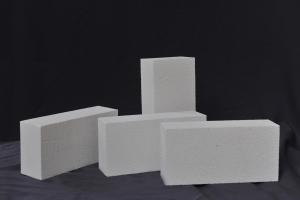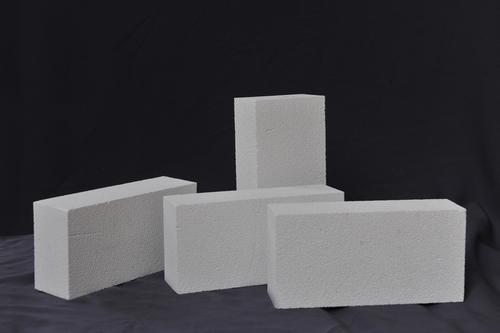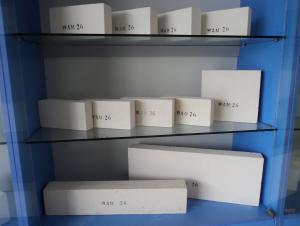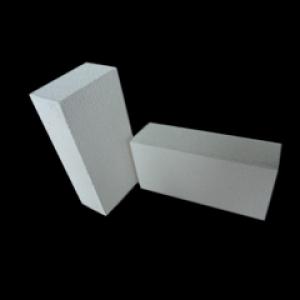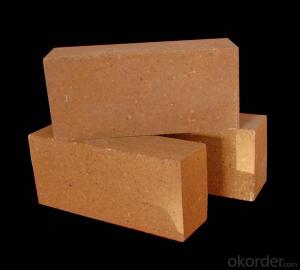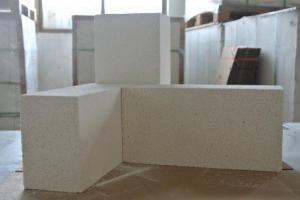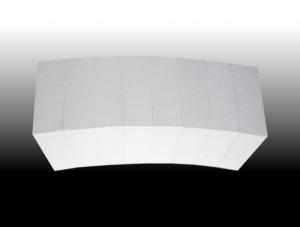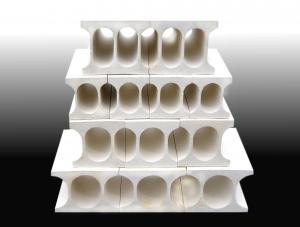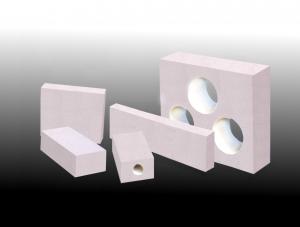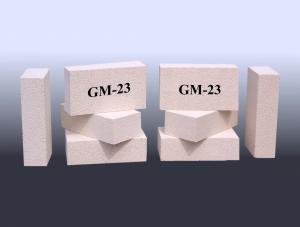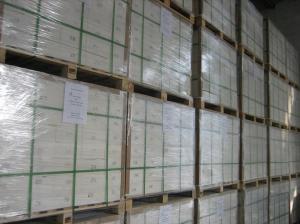Insulating Fire Brick - High-Quality Thermal Insulation Solution
- Loading Port:
- China Main Port
- Payment Terms:
- TT OR LC
- Min Order Qty:
- -
- Supply Capability:
- -
OKorder Service Pledge
Quality Product, Order Online Tracking, Timely Delivery
OKorder Financial Service
Credit Rating, Credit Services, Credit Purchasing
You Might Also Like
General Information
CMAX insulating firebricks are classified under temperature between 1300℃ to 1700℃, manufactured from high purity alumina clay.
Feature
Light weight and low thermal conductivity
Low heat storage
Low iron and impurities
High thermal shock resistance
Application
CMAX insulating firebricks can be used as a hot face lining directly exposed to the heat or as a backup insulation layer in iron and steel mills, non-ferrous foundries, petrochemical, ceramic, glass.
- Q: What is the recommended thickness of insulating fire bricks for optimal insulation?
- The thickness of insulating fire bricks recommended for optimal insulation can vary depending on the specific application and desired level of thermal protection. In general, it is commonly recommended to use insulating fire bricks with a thickness ranging from 2.5 to 4 inches (6.35 to 10.16 cm) for efficient insulation. Insulating fire bricks are designed to have low thermal conductivity, which effectively minimizes heat transfer. The insulation properties increase with thicker bricks, as they provide a greater barrier against thermal energy loss or gain. This is especially important in applications where maintaining a stable temperature is crucial, such as in industrial furnaces, kilns, or high-temperature appliances. To ensure optimal insulation performance, it is important to consider the specific requirements of the insulation project and consult with experts or manufacturers. Factors such as the maximum temperature, duration of exposure, and desired energy efficiency should be taken into account when determining the most suitable thickness for the insulating fire bricks.
- Q: What is the typical weight of an insulating fire brick?
- The typical weight of an insulating fire brick can vary depending on the specific type and manufacturer. However, on average, an insulating fire brick weighs between 2.5 to 3.5 pounds (1.1 to 1.6 kilograms). It is important to note that this weight estimation is for a standard-sized brick, typically measuring 9 x 4.5 x 2.5 inches (22.9 x 11.4 x 6.4 centimeters). Different densities and compositions of insulating fire bricks can result in slight variations in weight, so it is always advisable to refer to the manufacturer's specifications for accurate information.
- Q: Are insulating fire bricks resistant to water absorption?
- Yes, insulating fire bricks are highly resistant to water absorption.
- Q: Can insulating fire bricks be used in chimneys and flues?
- Insulating fire bricks are specifically designed for high-temperature applications and are often used in furnaces, kilns, and other industrial settings. While they do possess excellent insulating properties, they may not be the best choice for chimneys and flues in residential or commercial buildings. The main reason for this is that insulating fire bricks are not as durable and heat-resistant as other materials specifically designed for chimney and flue construction. They may crack or break when exposed to the extreme heat and rapid temperature changes that occur in chimneys. Additionally, these bricks are not typically designed to withstand the corrosive effects of flue gases, which can lead to their degradation over time. When it comes to chimneys and flues, it is generally recommended to use materials such as clay flue liners, stainless steel, or refractory bricks that are specifically manufactured for these applications. These materials are better suited to handle the high temperatures, corrosive gases, and rapid thermal expansion and contraction that occur in chimneys. It is important to consult with a professional chimney or flue specialist who can advise on the appropriate materials to use based on the specific requirements and conditions of your chimney or flue system.
- Q: Can insulating fire bricks be used in brick ovens?
- Yes, insulating fire bricks can be used in brick ovens. They are designed to withstand high temperatures and have excellent heat insulation properties, making them suitable for use in brick ovens to help retain and distribute heat evenly.
- Q: Can insulating fire bricks be used in the construction of regenerators?
- Yes, insulating fire bricks can be used in the construction of regenerators. These bricks are designed to have low thermal conductivity, which makes them suitable for applications that require heat insulation. Regenerators, which are used in various industries like glass manufacturing and metal refining, require materials that can withstand high temperatures and efficiently store and release heat. Insulating fire bricks can fulfill these requirements, making them a suitable choice for regenerator construction.
- Q: Can insulating fire bricks be used in electric furnaces?
- Yes, insulating fire bricks can be used in electric furnaces. These bricks are specifically designed to withstand high temperatures and provide excellent insulation, making them suitable for use in electric furnaces where heat retention is crucial.
- Q: Is it necessary to use mortar when installing insulating fire bricks?
- Using mortar during the installation of insulating fire bricks is necessary. It plays a crucial role in bonding the bricks together, guaranteeing a tight and secure fit. Moreover, it contributes to the creation of a sturdy and long-lasting structure capable of enduring high temperatures. Should mortar be absent, the bricks might not be adequately secured and could shift or loosen, thereby compromising the integrity of the installation. Additionally, mortar serves to fill any gaps or spaces between the bricks, providing insulation and preventing heat loss. Consequently, employing mortar is indispensable for a prosperous and efficient installation of insulating fire bricks.
- Q: What are the dimensions and sizes available for insulating fire bricks?
- Insulating fire bricks come in various dimensions and sizes, but the most common ones are 9x4.5x2.5 inches and 9x4.5x3 inches. However, they can also be found in other sizes, such as 9x4.5x1.25 inches or 12x4x2.5 inches, depending on the specific application and manufacturer.
- Q: Can insulating fire bricks be used as a thermal barrier?
- Indeed, insulating fire bricks have the potential to function as a thermal barrier. Specifically engineered with low thermal conductivity, these bricks are adept at reducing heat transfer. Consequently, they are an optimal selection for thermal insulation purposes. Their widespread usage is observed in industries that entail elevated temperatures, including furnaces, kilns, and other heat-intensive procedures. By employing insulating fire bricks, heat loss can be minimized, steady temperatures can be maintained, and energy efficiency can be enhanced. Furthermore, their lightweight composition facilitates effortless handling and installation, thereby augmenting their suitability as a thermal barrier.
Send your message to us
Insulating Fire Brick - High-Quality Thermal Insulation Solution
- Loading Port:
- China Main Port
- Payment Terms:
- TT OR LC
- Min Order Qty:
- -
- Supply Capability:
- -
OKorder Service Pledge
Quality Product, Order Online Tracking, Timely Delivery
OKorder Financial Service
Credit Rating, Credit Services, Credit Purchasing
Similar products
Hot products
Hot Searches
Related keywords
